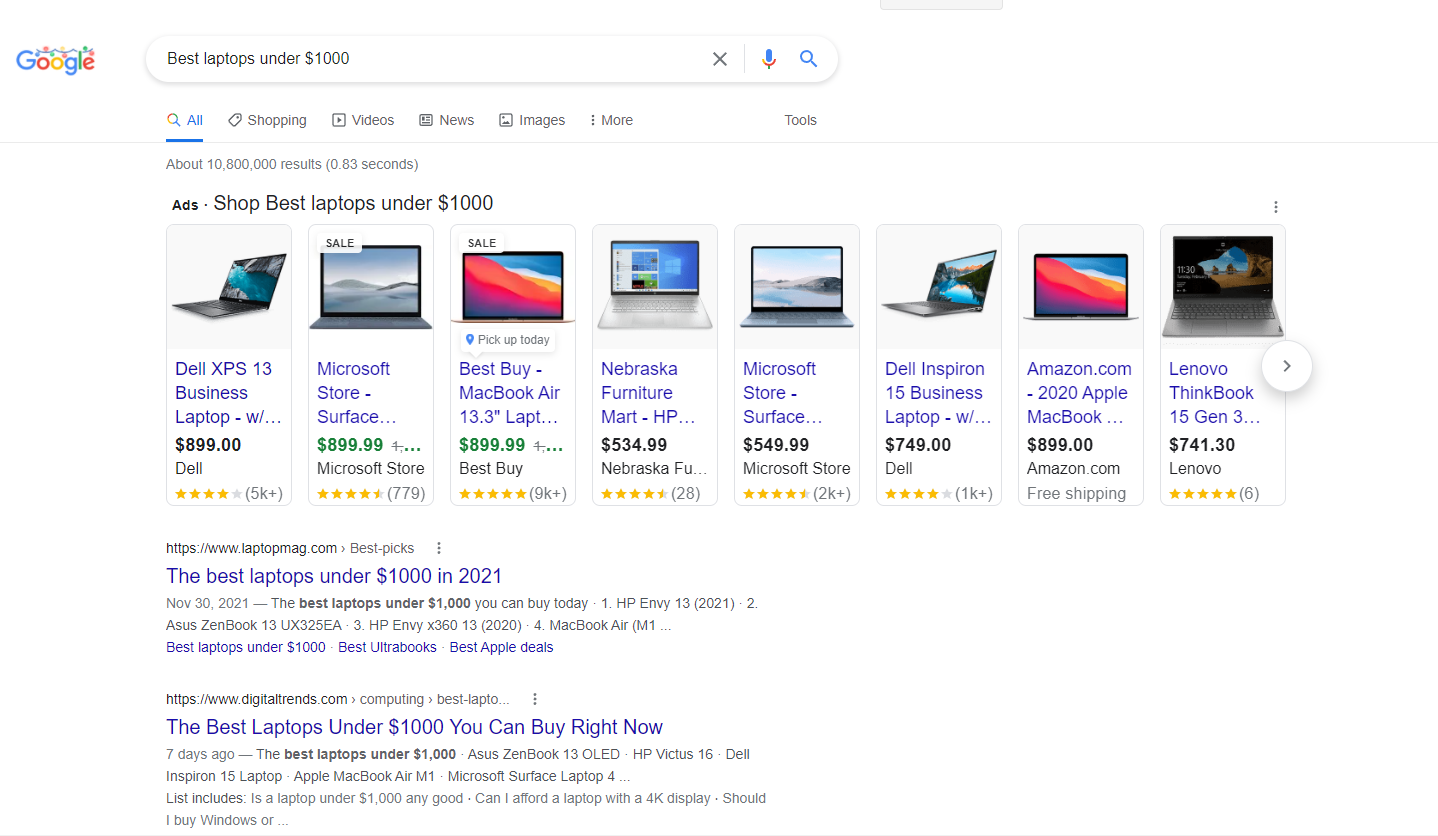There’s no doubt that SEO is the best way to market and drive traffic to your website for free.
It’s not only a super-profitable traffic source for almost most businesses, but it’s also very economical.
Unlike paid media ads, you don’t necessarily have to pay millions of dollars to drive traffic and sales.
And that’s why everyone loves it.
But many people might have a common doubt in their head: What is the future of SEO?
If you’re also one of them and confused about the future of SEO, then this post is crafted for you.
In this post, we will discuss the future of SEO and talk about the 5 key trends that you have so that you don’t stay behind.
So, without wasting any further moments, let’s quickly dig in.
Table of Contents
Future of SEO in 2025 And Beyond: 5 Key Trends That Will Impact Your Rankings
Change is the honest truth of human nature.
Similarly, SEO has been changing drastically over the past few years as well.
What used to work a few years back doesn’t work anymore.
SEO has literally shifted upside down.
And if you want to survive in this ever-changing SEO world, you have to keep up with its trends and follow through.
The future of SEO is unknown and no one knows what’s going to happen tomorrow.
But based on our experience, expert recommendation, and some in-depth research, we’ve figured out 5 key SEO trends that are going to decide whether you can survive in the future with SEO or not.
So let’s quickly look at those trends and try to understand what you can introduce in your own SEO strategy for better results.
1. Mobile SEO
Around 58% of all Google searches are now being done from mobile devices.
In the coming years, mobile searches will account for more than 80% of all Google searches.
Mobile is so important that even Google is introducing new algorithm updates to provide a better user experience for mobile users.
And if you don’t want to lose the majority of your search traffic, then you have to optimize your website for mobile SEO.
There’s no other way around.
In fact, a while back, Google introduced mobile-first indexing in which they stated that Google will now use the mobile version of the web page to index those pages.
That means you’ll get the results from the mobile index no matter what device you use.
But the main question is: How can you optimize your site for mobile SEO?
Well, it’s not rocket science.
In fact, it’s super easy.
Here are a few crucial things you can do to optimize your website for mobile SEO:
- Mobile Friendliness: Having a mobile-friendly website is not an option anymore, it’s a necessity. No matter what, if you want to do good in SEO and want to be future-proof, you have to make sure your website is perfectly optimized for mobile devices.
- Improve page speed: User experience is the most crucial factor that’s going to make or break your mobile SEO. And if you want to improve the user experience of the mobile version of your site, you have to improve your page loading speed first. Improving your page loading speed will automatically improve the user experience to a large extent.
- Easily scannable content: You have to make sure that your content is easily scannable and readable on mobile devices. Use big, bold fonts, paddings, and perfect image dimensions so that mobile users can easily read your content.
Apart from this, you can also use Google’s mobile-friendly test tool to see whether your website is fully mobile-optimized or not.
2. Increase of Voice Search
Over 27% of all global internet users are using voice search on mobile devices.
And it has grown 35x over the last decade.
Experts believe that this number is going to surpass by a large extent in the next few years.
Voice search has become immensely popular, especially among mobile device users, because of its ease of use and convenience.
It’s certainly easier to search for something via voice than typing it on Google.
Humans are becoming lazier than ever before, and we’re constantly looking for solutions that will save us time and energy.
And the voice does the exact same thing.
Now if you’re into SEO, it’s really crucial for you to understand the importance and future growth of voice search.
Because if you don’t understand it now, you’ll be way behind your competitors.
Voice search totally changed the way we used to search a query on Google.
And if you don’t adapt to this change in your SEO strategy, it’s going to be almost impossible for you to survive in the near future.
That’s why, from now on, you should start optimizing your content for voice searches so that when people search for something on Google using voice search, your website will show up higher.
But the question is: How will you optimize your site for voice search? Is there any specific strategy for that?
Well, there is.
You don’t have to go ahead and make huge changes to your site and content to achieve this result.
Some simple and easy tweaks will do the work for you.
Here are the few things you have to keep in mind while crafting your content if you want to optimize it for voice search:
- Give short and precise answers to the questions
- Optimize your site for winning featured snippets
- Write for humans, not for robots.
- Include long-tail keywords throughout your content
If you just keep these few things in mind, you can see some great results within a few months.
3. Focusing More on Search Intent
SEO starts with search intent.
Search intent is basically the reason or purpose behind the user’s search.
It’s the most basic yet the most important thing that you have to keep in mind.
SEO is not what it used to be 5 years back.
Earlier, Google couldn’t really understand the contents of the web pages and sorely ranked pages based on keywords and backlinks.
But the scenario is completely different now.
With algorithm updates like BERT, Google bots can now understand the contents of the pages.
Because of this, if your content doesn’t align with the search intent, your content isn’t going to rank on Google, no matter how well you’ve optimized it or how many backlinks you’ve created for that page.
All that matters is – whether the page aligns with the search intent or not.
I’m not saying that just aligning your content with the search intent will give you a ranking boost. You definitely have to create backlinks and optimize your content for SEO.
But before you do anything else, you have to make sure the search intent is perfectly matching with the content you’ve created.
Only doing this will increase your chance of ranking on the first page by 50%.
But there’s a problem:
Many people are still unaware of understanding search intent.
However, luckily, there’s a simple solution available to this problem.
You can easily understand what type of content you have to create following the search intent just by looking at the search result for that given keyword.
For example, if you search for “best laptops under $1000”, you’ll see almost all of the pages ranking on the first page of Google have a list of laptops that are under $1000.
Now, that’s fulfilling the intent of the keyword.
If you add a laptop that’s above $1000 or write content without following the listicle format, you’re content never going to rank for that keyword.
Search intent is not complicated.
If you just observe the search results for your targeted keyword, you’ll easily understand what type and how you have to create the content.
4. Evergreen Contents Will Thrive
Content is the core of SEO.
No matter what SEO strategies you use, how many backlinks you build, or how well you design your website…
…if you don’t have solid content, you’re never going to rank on Google (No matter what).
Even if you’re able to rank using some tricks or hacks, you can’t sustain that ranking for a long period of time.
That’s how valuable content is in SEO.
But you have to remember there are two types of content that people publish:
- Evergreen content
- Buzz contents
Evergreen contents are the contents or topics that have a constant interest and search volume.
Some of the examples of evergreen topics are:
- How to take a screenshot on Windows
- How to make grilled chicken
- How to lose weight
These types of content pieces are not affected by any event or specific seasons and remain valuable throughout.
Buzz contents basically depend on any event, news, or specific season of the year.
Here’s an example of buzz content:
- Best Black Friday deals
- Real Madrid vs Barcelona
While buzz content can drive instant website traffic, it can vanish within a few days.
So, for better SEO performance and to have sustainable traffic for your website, you would have to create and publish evergreen content on your site.
Instead of publishing 10 buzz-related or thin content, publishing 3 evergreen and high-quality content always going to bring better results for you.
Also, by creating high-quality, evergreen content, you can easily win the trust of your audience naturally.
And I think I don’t have to explain how important trust is for any sort of online business.
5. Optimizing For Core Web Vitals
Core web vitals are basically some specific sets of metrics that are a part of the Google page experience signal.
Core web vitals consist of metrics like:
- Largest Contentful Paint (LCP)
- First Input Delay (FID)
- Cumulative Layout Shift (CLS)
These help to measure the user experience of your website.
At the beginning of this year, Google announced that they are going to introduce page experience signals and core web vitals as a crucial ranking factor.
And Google has already started rolling out this update.
Of course, just having a great user experience and optimizing for core web vitals won’t magically push you to the top of search results.
You still have to practice and implement other SEO strategies.
However, having a great user experience and optimizing for core web vitals will definitely give you an extra edge over websites that provide a poor user experience.
Google wants to provide the best user experience to its users.
And that’s why they are constantly introducing new algorithm updates focused on user experience.
If you want to have a future-proof SEO in place, then optimizing for core web vitals and great user experience should be your first priority now.
You can use tools like Google Page Speed Insights or GTMetrix to figure out your website’s current core web vital score.
After that, you can read this massive guide that we’ve published about core web vitals to learn how to optimize your site for core web vitals.
Conclusion: What’s The Future of SEO in 2022 And Beyond?
We never know what exactly will be the future of SEO.
We can just predict and work on the things that have the highest potential to blow up.
SEO changes a lot. What was working a few years back doesn’t work now.
And what’s working today might not work a few years down the line.
That’s why your focus should be to adopt the changes as soon as possible and provide the best solution to your audience.








